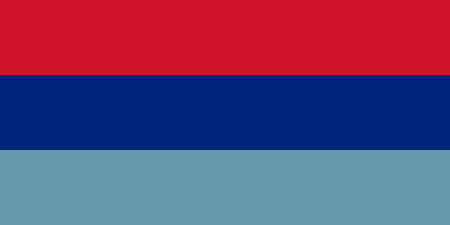Filler (linguistics)
|
Read other articles:

Former MLB team in Canada, predecessor of the current Washington Nationals Expos redirects here. For the reggae band, see The Expos (band). Montreal ExposLes Expos de MontréalInformationLeagueNational League (1969–2004)BallparkJarry Park Stadium (1969–1976)Olympic Stadium (1977–2004)Hiram Bithorn Stadium (San Juan, Puerto Rico) (2003–2004)Established1969Folded2004Nickname(s)The 'Spos, Nos AmoursNL East1 (1981)ColoursRed, white, blue[1] MascotSouki (1978)Youppi…

この記事は検証可能な参考文献や出典が全く示されていないか、不十分です。出典を追加して記事の信頼性向上にご協力ください。(このテンプレートの使い方)出典検索?: コルク – ニュース · 書籍 · スカラー · CiNii · J-STAGE · NDL · dlib.jp · ジャパンサーチ · TWL(2017年4月) コルクを打ち抜いて作った瓶の栓 コルク(木栓、蘭&…

Village in Karnataka, IndiaKalleshwara TempleVillageKalleshwara temple (1057 A.D.) at Hire Hadagali in Bellary districtKalleshwara TempleShow map of KarnatakaKalleshwara TempleShow map of IndiaCoordinates: 14°55′31″N 75°49′52″E / 14.92528°N 75.83111°E / 14.92528; 75.83111Country IndiaStateKarnatakaDistrictBellary districtTalukHoovina HadagaliLanguages • OfficialKannadaTime zoneUTC+5:30 (IST) The Kalleshwara temple (also spelt Kalleshvara or Ka…

College football game2011 AT&T Cotton Bowl Classic75th Cotton Bowl Classic LSU Tigers Texas A&M Aggies (10–2) (9–3) SEC Big 12 41 24 Head coach: Les Miles Head coach: Mike Sherman APCoachesBCS 111211 APCoachesBCS 181717 1234 Total LSU 72176 41 Texas A&M 10707 24 DateJanuary 7, 2011Season2010StadiumCowboys StadiumLocationArlington, TexasMVPDB Tyrann Mathieu (LSU) WR Terrence Toliver (LSU)FavoriteLSU by 1, Over/Under: 49[1]RefereeRandy Smith (C-USA)Atten…

Species of large bird from Africa Wattled crane Conservation status Vulnerable (IUCN 3.1)[1] CITES Appendix II (CITES)[2] Scientific classification Domain: Eukaryota Kingdom: Animalia Phylum: Chordata Class: Aves Order: Gruiformes Family: Gruidae Genus: Grus Species: G. carunculata Binomial name Grus carunculata(Gmelin, JF, 1789) Synonyms Ardea carunculata Gmelin, 1789 Bugeranus carunculatus (Gmelin, 1789) The wattled crane (Grus carunculata) is a large, threatene…

Questa voce o sezione deve essere rivista e aggiornata appena possibile. Sembra infatti che questa voce contenga informazioni superate e/o obsolete. Se puoi, contribuisci ad aggiornarla. Conflitto del delta del NigerMappa della Nigeria che mostra gli stati tipicamente considerati facenti parte del delta del Niger: 1. Abia, 2. Akwa Ibom, 3. Bayelsa, 4. Cross River, 5. Delta, 6. Edo, 7.Imo, 8. Ondo, 9. Rivers.Data2004-in corso LuogoDelta del Niger, Nigeria Schieramenti Nigeria Esercito della Niger…

本條目存在以下問題,請協助改善本條目或在討論頁針對議題發表看法。 此條目需要編修,以確保文法、用詞、语气、格式、標點等使用恰当。 (2013年8月6日)請按照校對指引,幫助编辑這個條目。(幫助、討論) 此條目剧情、虛構用語或人物介紹过长过细,需清理无关故事主轴的细节、用語和角色介紹。 (2020年10月6日)劇情、用語和人物介紹都只是用於了解故事主軸,輔助讀�…

Potato dish For the film, see Home Fries. Home friesA plate of home fried potatoes, showing the irregular size and texture of the potato dishAlternative namesHouse fries, country potatoes, sometimes American friesMain ingredientsPotatoes, vegetable oil or butter Cookbook: Home fries Media: Home fries Home fries (US, Canada), gommer fries (Western Canada), house fries (US), American fries (US), fried potatoes (UK, Canada and regional US), Bratkartoffeln (German), or bistro potatoes (sou…

Indian TV series or program RudramGenreThrillerDramaCreated byPotadi EntertainmentWritten byGirish JoshiDirected byBhimrao MudeStarringSee belowTheme music composerNarendra BhideCountry of originIndiaNo. of episodes74ProductionExecutive producersNikhil SethVinod LavekarSandesh KulkarniEditorsPrathmesh Patkar, Ashwini bagdeRunning time22 minutesOriginal releaseNetworkZee YuvaRelease7 August (2017-08-07) –16 November 2017 (2017-11-16) Rudram is a Marathi thriller television series…

Hyundai AccentInformasiProdusenHyundai Motor CompanyMasa produksi1994–sekarangBodi & rangkaKelasMobil subkompakTata letakFF layoutKronologiPendahuluHyundai Excel Hyundai Accent merupakan kendaraan sedan yang diproduksi oleh perusahaan Korea Selatan, Hyundai Motor Company sejak tahun 1994 untuk pasaran global. Hyundai Accent pertama kali diluncurkan tahun 1994 dengan kendaraan 4 pintu. Mobil ini dirakit di Ulsan, Korea Selatan. Versi Bimantara Bimantara Cakra adalah salah satu mobil seri se…

2018 American science fantasy adventure film A Wrinkle in TimeTheatrical release posterDirected byAva DuVernayScreenplay by Jennifer Lee Jeff Stockwell Based onA Wrinkle in Timeby Madeleine L'EngleProduced by Jim Whitaker Catherine Hand Starring Storm Reid Oprah Winfrey Reese Witherspoon Mindy Kaling Gugu Mbatha-Raw Michael Peña Zach Galifianakis Chris Pine CinematographyTobias A. SchliesslerEdited bySpencer AverickMusic byRamin DjawadiProductioncompanies Walt Disney Pictures Whitaker Entertain…

Ancient name for the island of Great Britain This article is about the archaic name for Britain. For other uses, see Albion (disambiguation). The White Cliffs of Dover may have given rise to the name Albion. Albion is an alternative name for Great Britain. The oldest attestation of the toponym comes from the Greek language. It is sometimes used poetically and generally to refer to the island, but is less common than Britain today. The name for Scotland in most of the Celtic languages is related …

Questa voce o sezione sugli argomenti gruppi etnici e storia antica non cita le fonti necessarie o quelle presenti sono insufficienti. Puoi migliorare questa voce aggiungendo citazioni da fonti attendibili secondo le linee guida sull'uso delle fonti. Segui i suggerimenti del progetto di riferimento. Questa voce o sezione sull'argomento storia antica non è ancora formattata secondo gli standard. Contribuisci a migliorarla secondo le convenzioni di Wikipedia. Segui i suggerimenti del pr…

For the current cup competition, see Trofeo de Campeones de la Liga Profesional. Football tournamentTrofeo de Campeones de la Superliga ArgentinaOrganising bodySuperliga ArgentinaFounded2019Abolished2019; 5 years ago (2019)RegionArgentinaNumber of teams2Related competitionsCopa SuperligaPrimera DivisiónLast championsRacing Club (1st title)Most successful club(s)Racing Club (1 title)Television broadcastersFox Sports TNT Sports The Trofeo de Campeones de la Superliga Argentina w…

For related races, see 1926 United States gubernatorial elections. 1926 Connecticut gubernatorial election ← 1924 November 2, 1926 1928 → Nominee John H. Trumbull Charles G. Morris Party Republican Democratic Popular vote 192,425 107,045 Percentage 63.58% 35.37% County resultsTrumbull: 50–60% 60–70% Governor before election John H. Trumbull Republican Elected Governor John H. Trumbull Republican The…

Beauty pageant competition, Organization For the most recent competition, see Miss International 2023. For the upcoming competition, see Miss International 2024. Miss InternationalTypeInternational women's beauty pageantHeadquartersTokyo, JapanFirst edition1960Most recent edition2023Current titleholderAndrea Rubio VenezuelaPresidentAkemi ShimomuraLanguageEnglishWebsitewww.miss-international.org Miss International (Miss International Beauty or The International Beauty Pageant) is a Japan-bas…

L'esposizione nazionale italiana fu un ciclo di esposizioni che si tennero sul suolo italiano dall'anno 1861, inizialmente a cadenza decennale, durante il Regno d'Italia. Scopo delle esposizioni fu di costruire e rafforzare lo spirito nazionale e mettere in mostra le più avanzate produzioni nei vari campi dell'industria e del commercio. Alle aziende venivano conferiti riconoscimenti come diplomi, medaglie d'oro o d'argento. Le esposizioni nazionali ebbero un ruolo importante nella storia dell'e…

Hamlet and census-designated place in New York, US This article needs additional citations for verification. Please help improve this article by adding citations to reliable sources. Unsourced material may be challenged and removed.Find sources: Palenville, New York – news · newspapers · books · scholar · JSTOR (November 2014) (Learn how and when to remove this message) Census-designated place in New York, United StatesPalenville, New YorkCensus-designate…

Arqueología La arqueología es la ciencia que estudia lo que se refiere a las artes, a los monumentos y a los objetos de la antigüedad, especialmente a través de los restos encontrados. (DRAE, 23.ª edición, 2014) Portal:Antropología Ramas principales -Arqueología subacuática -Arqueometría -Egiptología -Etnoarqueología Teorías, corrientes, escuelas arqueológicas Arqueología postprocesual Arqueología procesual Determinismo medioambiental Difusionismo Evolución cultural Funcionalism…

Contendas do Sincorá Município do Brasil Símbolos Bandeira Brasão de armas Hino Lema Governo do trabalho Gentílico contendense Localização Localização de Contendas do Sincorá na BahiaLocalização de Contendas do Sincorá na Bahia Contendas do SincoráLocalização de Contendas do Sincorá no Brasil Mapa de Contendas do Sincorá Coordenadas 13° 45' 46 S 41° 02' 27 O País Brasil Unidade federativa Bahia Municípios limítrofes Tanhaçu, Ituaçu…